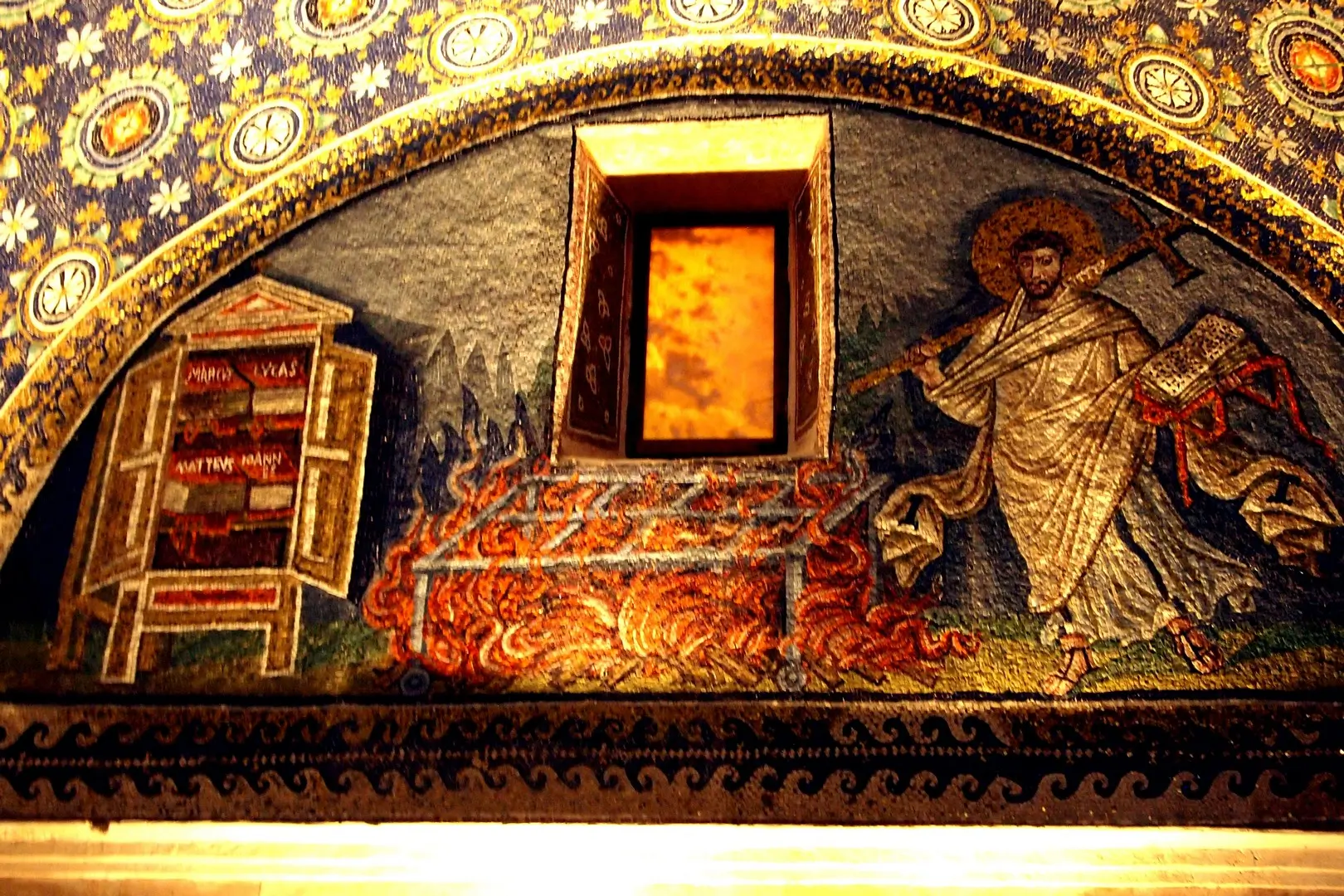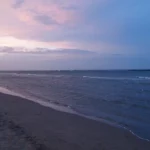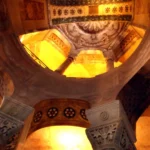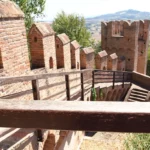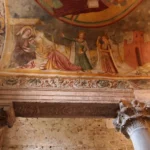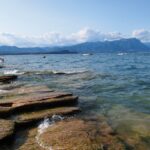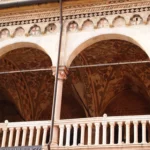A long time ago, Ravenna flourished: under the Romans – the most important port, from the beginning of the 5th century – the capital of the Western Roman Empire, from the end of the 5th century – the capital of the barbarian kingdom. Then the Byzantines came and decorated it with mosaics. But the sea left, the old port was abandoned. The Byzantines were replaced by the Lombards, the Lombards by the Franks, the local feudal lords, the Venetians…
I love such fallen asleep great cities that have preserved something valuable.
Lido Adriano. Ravenna beach resorts
Torre Pedrera Rimini
Around Ravenna. What to visit
Around Rimini map. Tourist destinations
Brisighella
Dozza street art and old town
What to see in Padua
Around Venice and Lido di Jesolo. Map of attractions
The main value here is the old churches with the Ravenna mosaics in them. This is a city that has more inside than outside, so not everyone will like it. The time of construction of the temples is almost indecent – 5-6 centuries. I strongly advise you to immediately get a guide with photographs, because without it it is not at all obvious what to look for.
History of Ravenna
The Romans colonized the region in the 2nd century BC. and immediately appreciated the location: the future Ravenna had a well-protected lagoon. Therefore, in the 1st century AD Emperor Augustus ordered to equip the harbor of Classis here and made it the main port for the entire local coast.
In 402, Ravenna became the capital of the Western Roman Empire, which moved here from Milan. The place seemed more secure from the barbarians. But this quickly ended – in 476 the empire fell. However, the barbarians (Odoacer) and the ostrogoths (Theodoric) who replaced them also fully appreciated the location of the city and left the capital here. Theodoric built temples and drained swamps, but chose the wrong religion – Arianism, so a religious war broke out.
The city owes its present appearance to the Byzantines – they appeared here in 540 and decorated the temples with mosaics.
But already in the middle of the 6th century, the old port of Classis ceased to be a port, the coast moved away, and the city lost its significance.
In 1321, Dante died in the city.
Three centuries after 1512 were especially difficult, when the city was burned and plundered by the troops of Louis XII.
The city woke up only after the Second World War, when resorts and industrial enterprises were built, although not completely – it is still not as filled with life and tourists as other cities of the arts.
Ravenna map
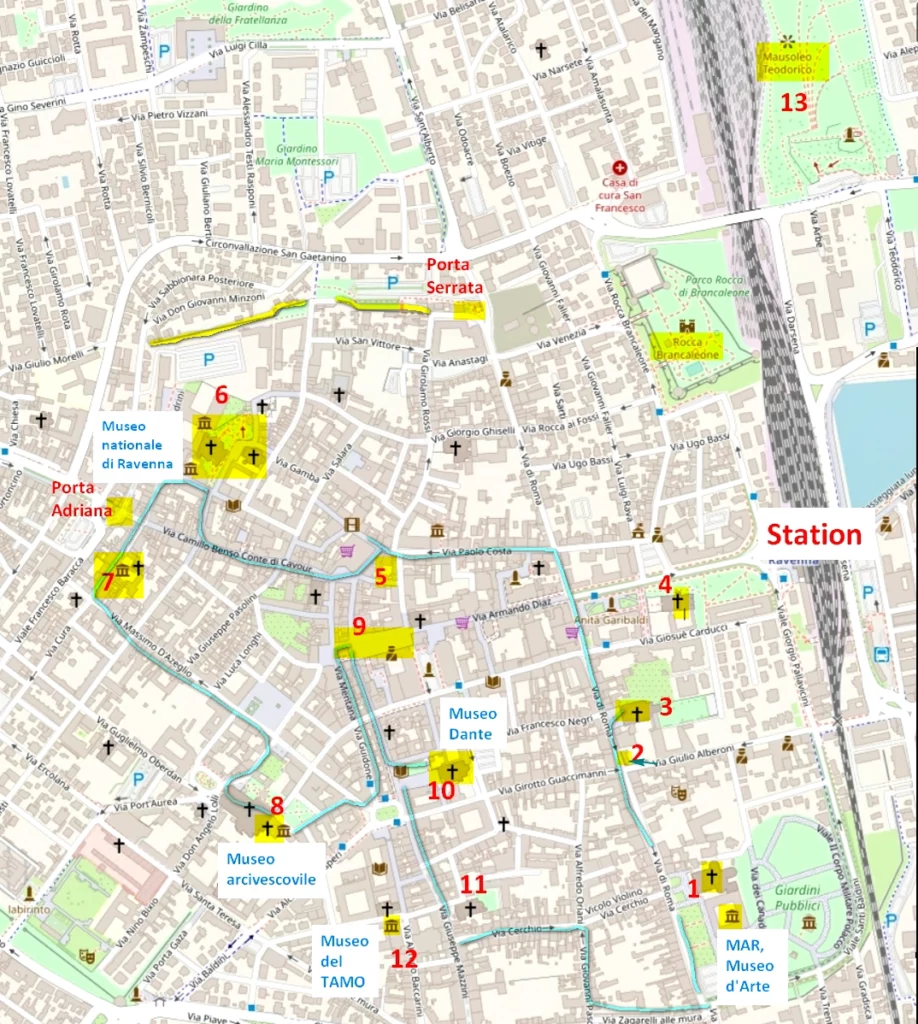
What to see in Ravenna
We parked near the station, at Porto Nuovo. On Sunday parking is free. From here we will start our route.

First, a newer church – Santa Maria in Porto (1), 18th century. This is perhaps the only trace of the Baroque in the city. Its main value is the relief of the Greek Madonna (patron of Ravenna). According to legend, it was found in 1100.
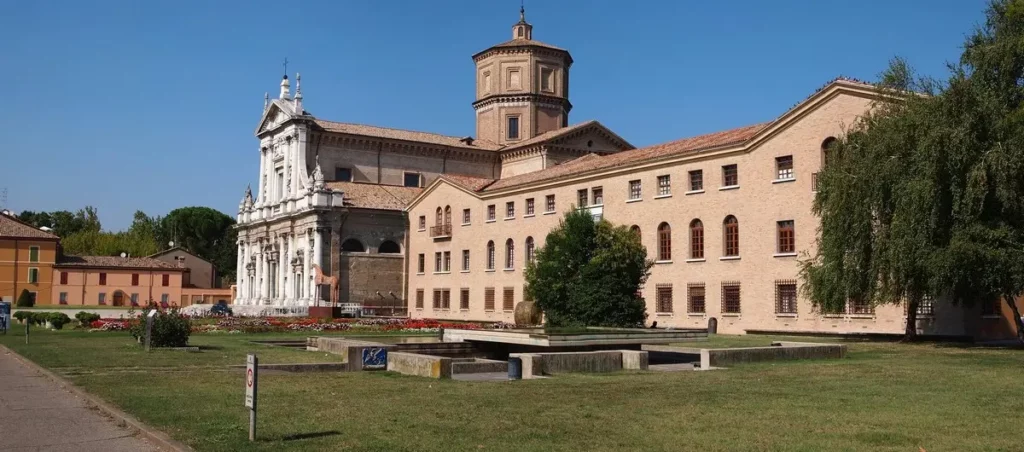
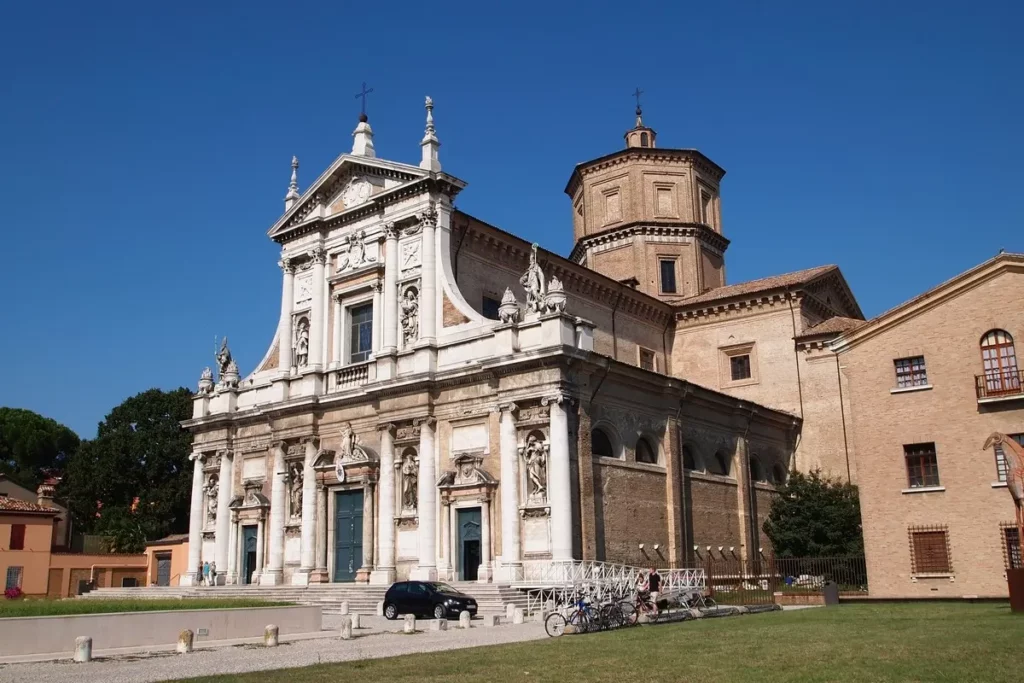
The building is not determined by the researchers, however, very old – 7-8 centuries. It has the nickname Teodorico Palace (2, Palazzo di Teodorico). You can get there by appointment.
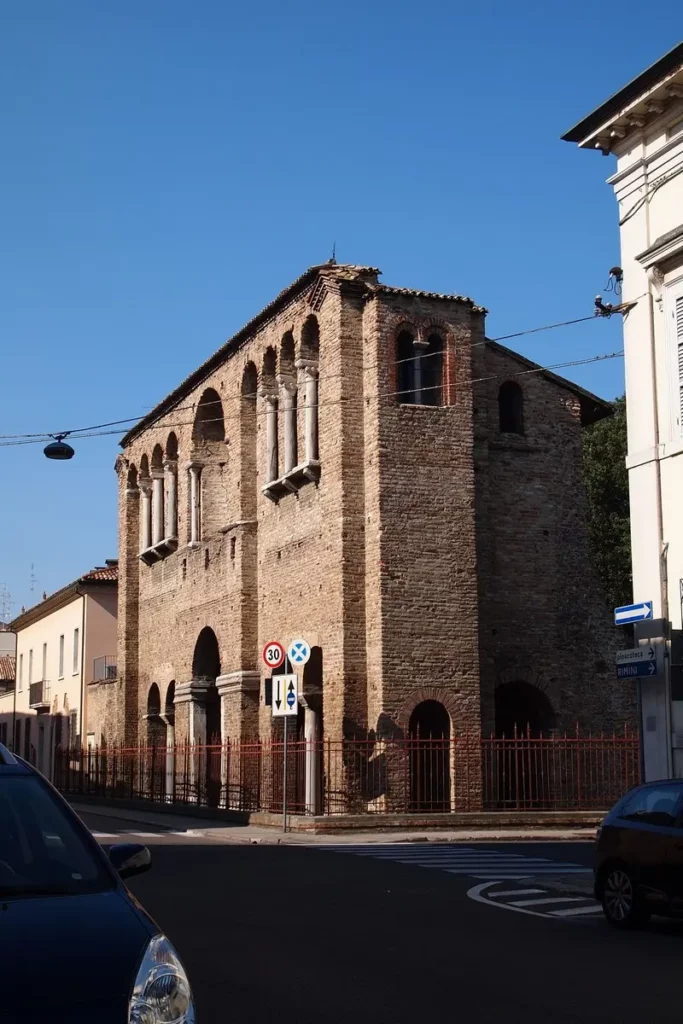

Ravenna mosaics
Here we start with the route of Ravenna mosaics.
Church of Sant’Apollinare Nuovo (3).
This church is new (nuovo) only in name – it was built by Theodoric as a court church. In the 9th century, the relics of St. Apollinare were transferred here and the church was renamed. Nuovo was added to distinguish it from another church in honor of the same saint.
Unfortunately, mosaics with plots here are quite far from the viewer, it is difficult to see. They depict the miracles and passions of Christ. The bottom row is the procession of saints and martyrs.
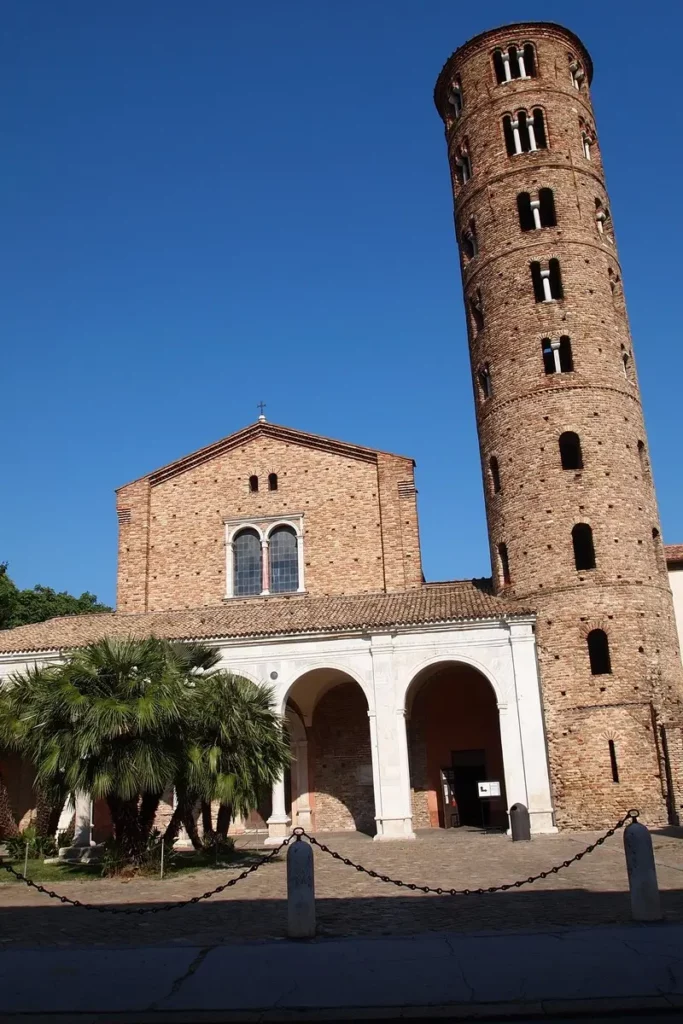



Courtyard

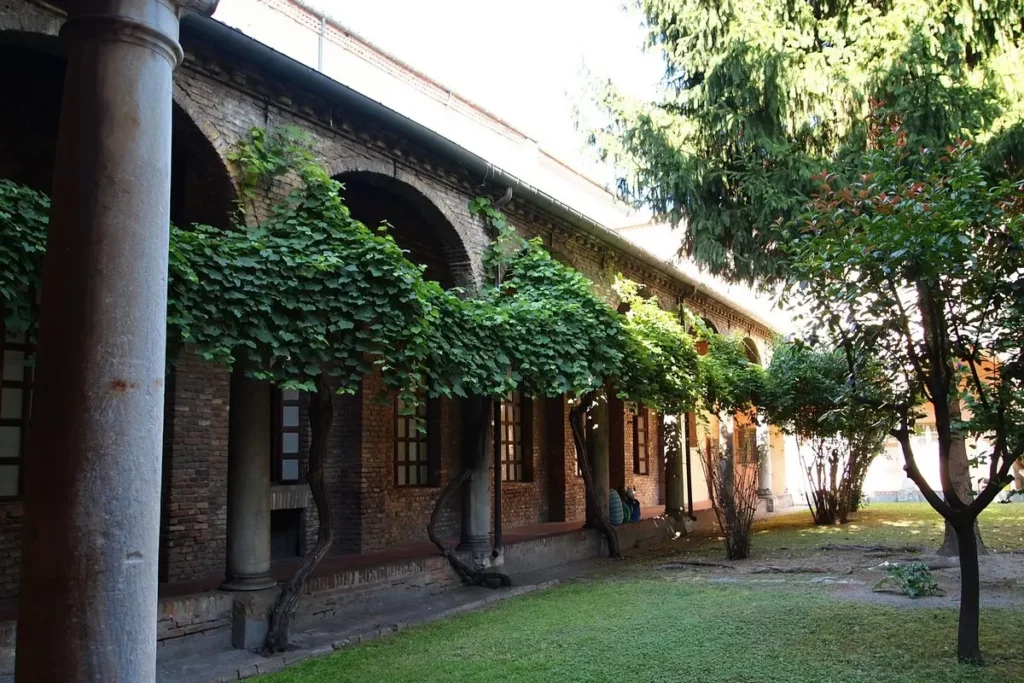
Basilica of St. John the Evangelist (4, S.Giovanni Evangelist, 5th century) was repeatedly rebuilt, suffered from bombing. Nevertheless, there are also mosaics there, only not solid ones, but remnants hung on the walls.

City tower (5, Torre Civica, 12th century)
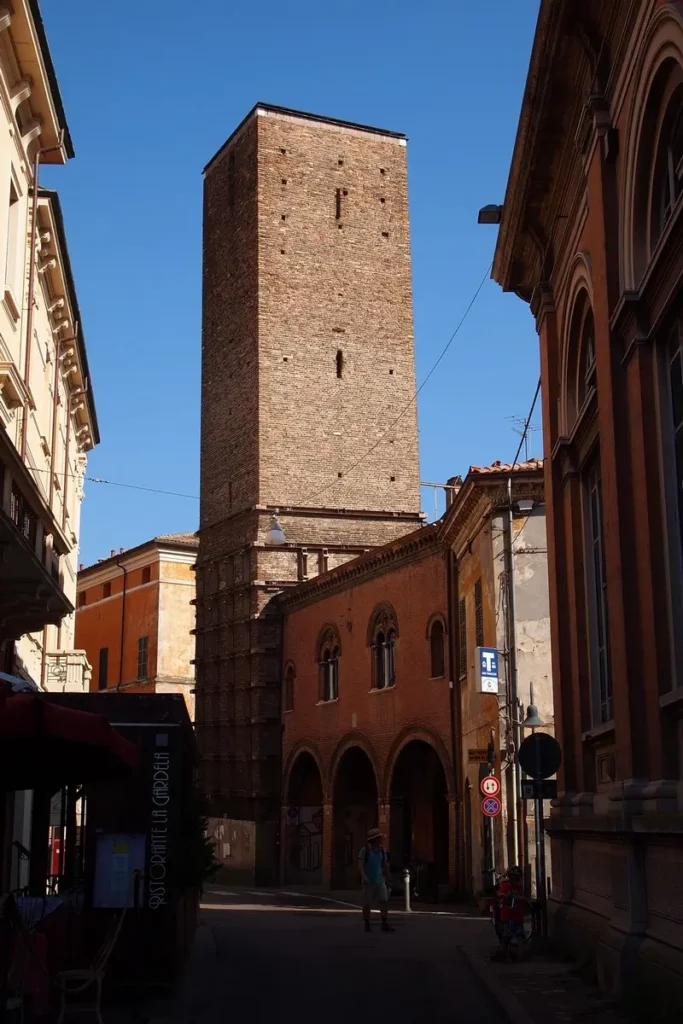
Basilica of San Vitale and Galla Placidia Mausoleum
The most interesting church in Ravenna is the Basilica of San Vitale (6). An absolutely magical place: I don’t know how the lighting is arranged there (I can’t believe that these are only windows), but the mosaics covering the walls seem to glow.
The church is octagonal – this is how the sanctuaries were built in honor of the martyrs. It was built in the 6th century.
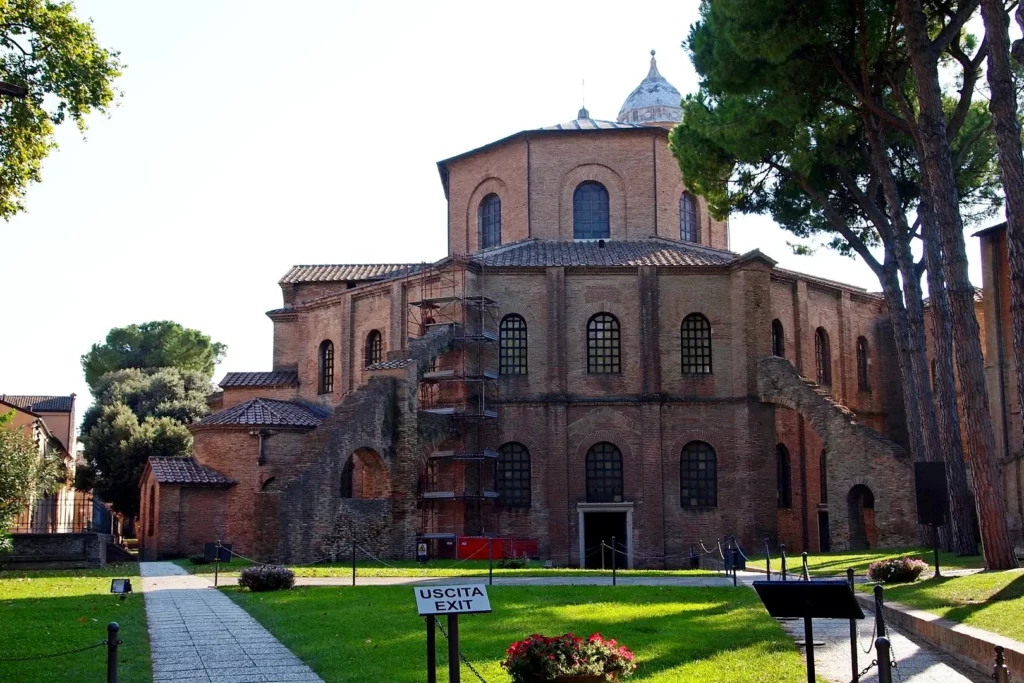

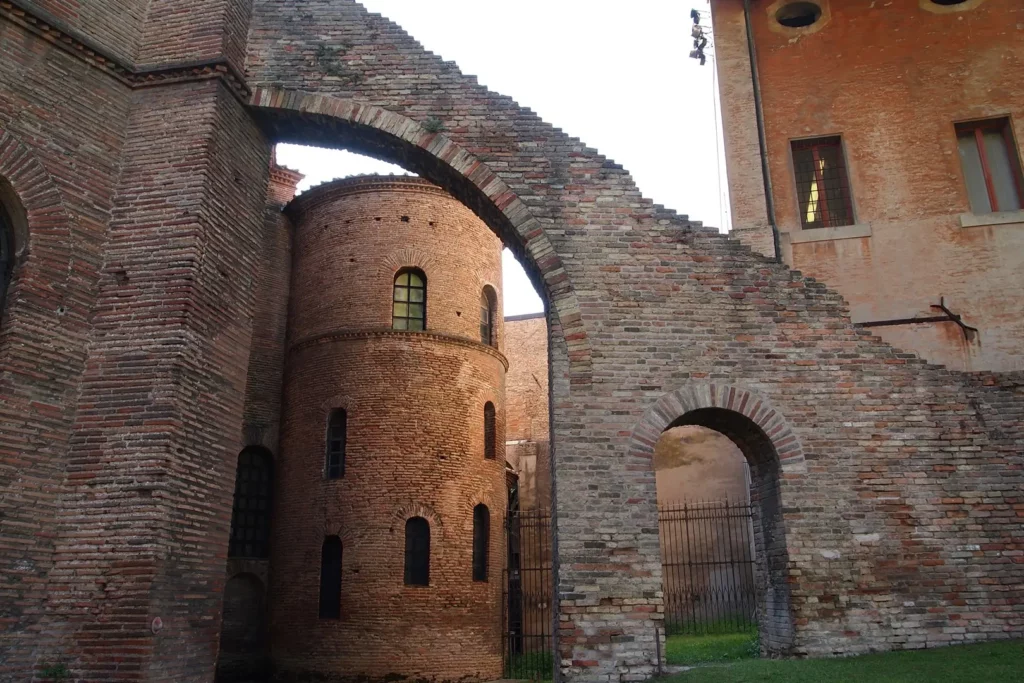

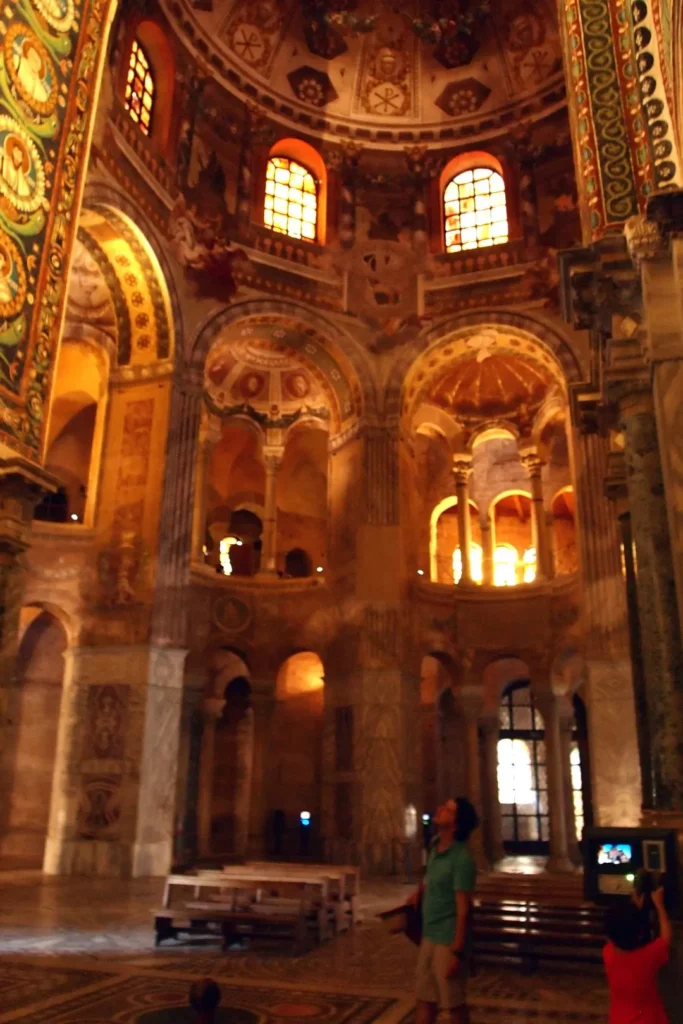

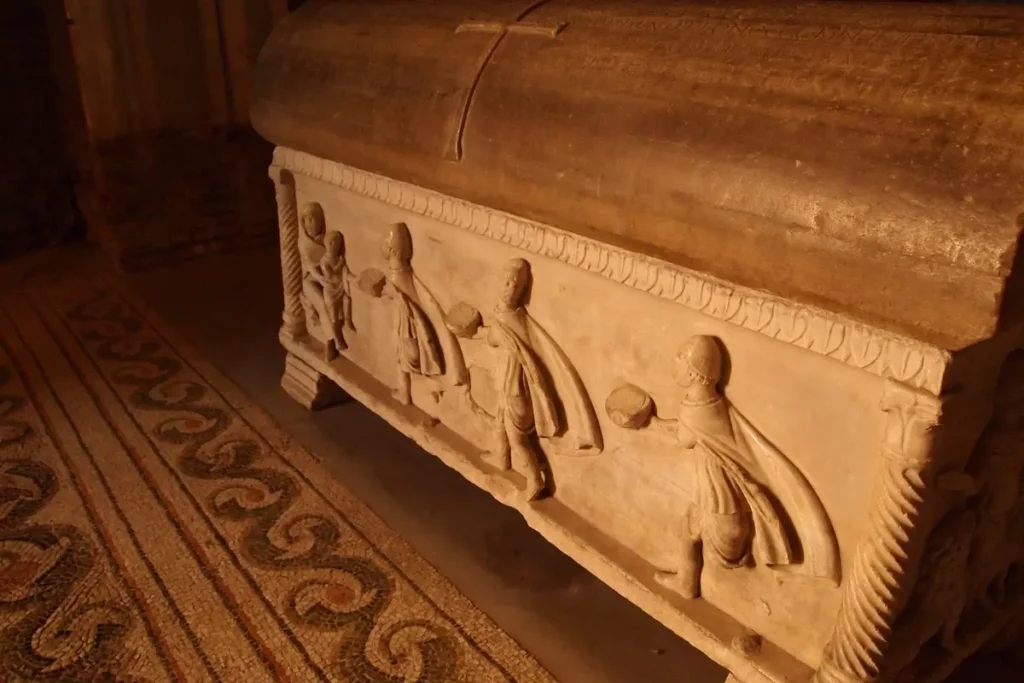

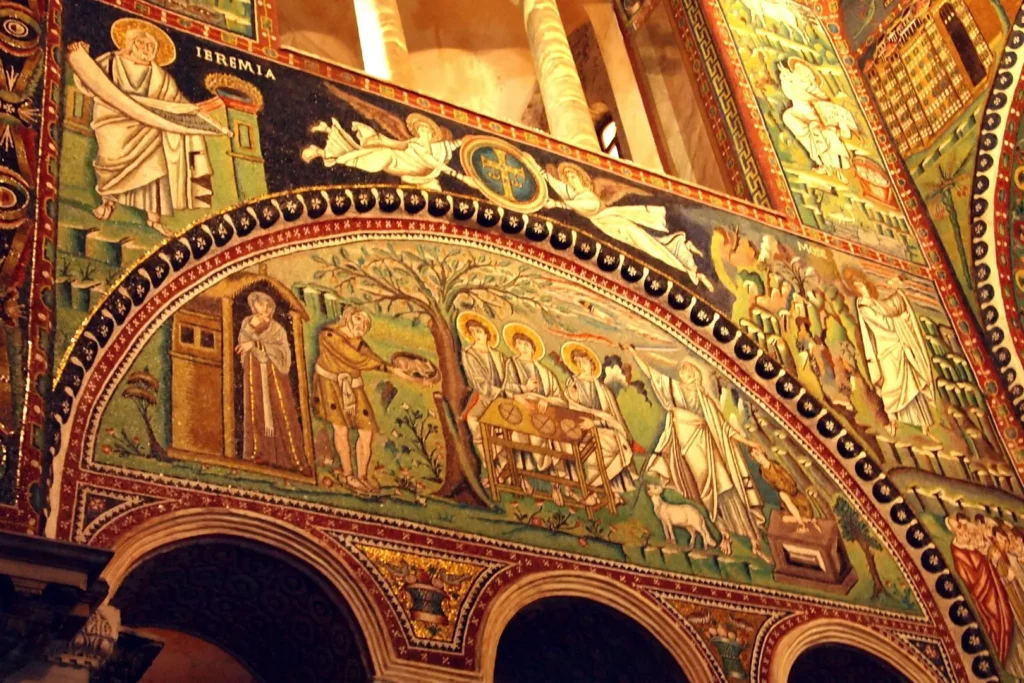
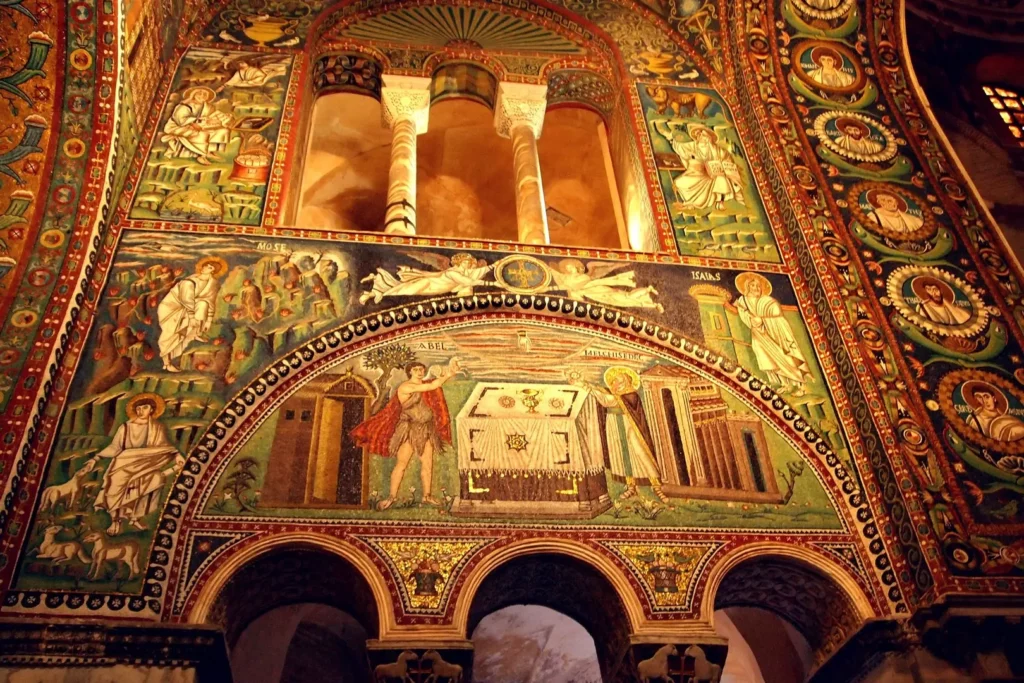
The dome is more modern – 18th century, but does not spoil the impression. The image is made in such a way that the effect of volume is created, in some places it looks like sculpture or stucco.
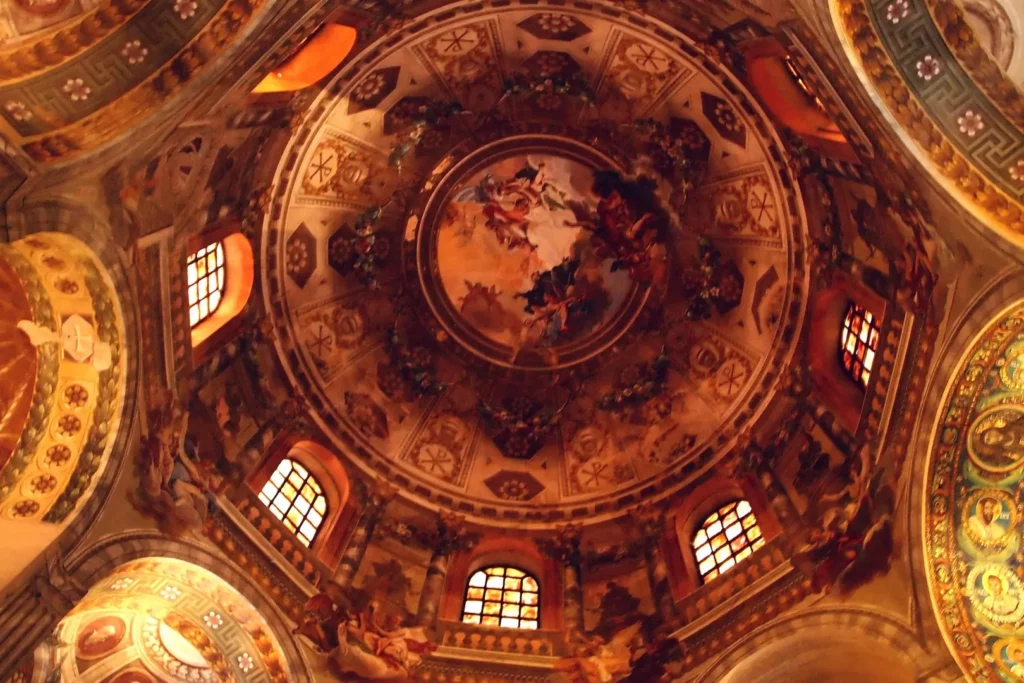

And even the marble is matched symmetrically


Next to the basilica is the National Museum (Museo nationale di Ravenna) with a historical collection: ancient Roman and early Christian sculpture, archaeological exhibits, mosaics, coins, paintings of the 17th-18th centuries.
Opposite the basilica is the so-called Galla Placidia Mausoleum. Galla Placidia was the daughter of the emperor Theodosius and the sister of the Roman emperor Honorius, who moved the capital to Ravenna. Galla Placidia was captured by Alaric, was ransomed and given in marriage, and as a result she became regent for her son-emperor and ruled the empire from Ravenna. However, it is assumed that she was still buried in Rome, where she died in 450.
This is a small chapel. Outwardly – a stone house of the “barn” type. Inside is a fairy tale.
Colors are rendered inaccurately due to poor lighting. They are azure, not purple.
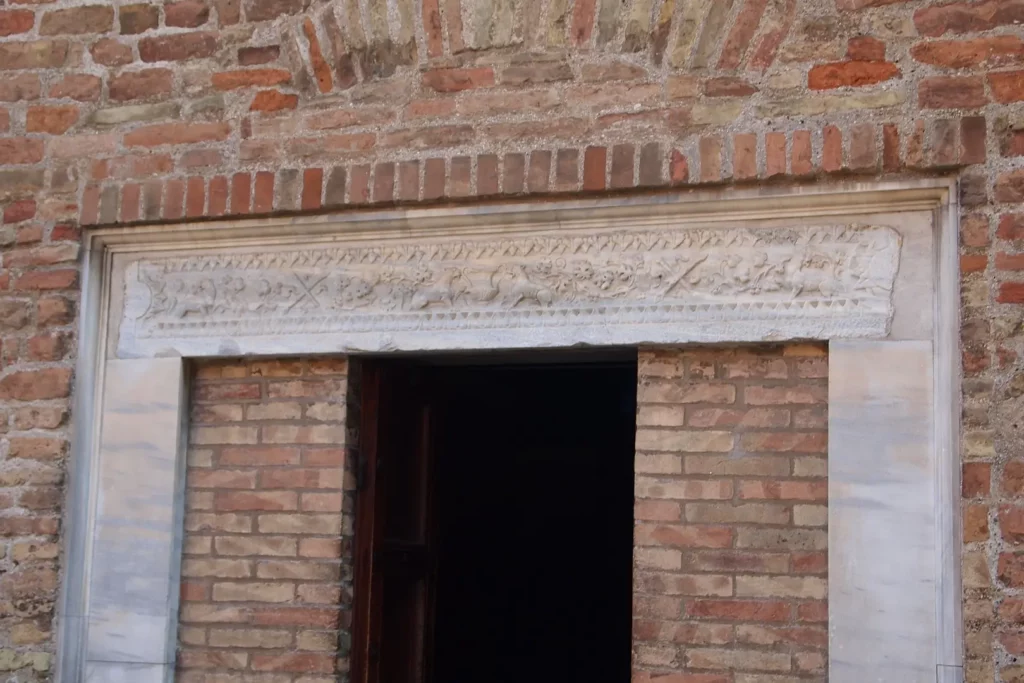
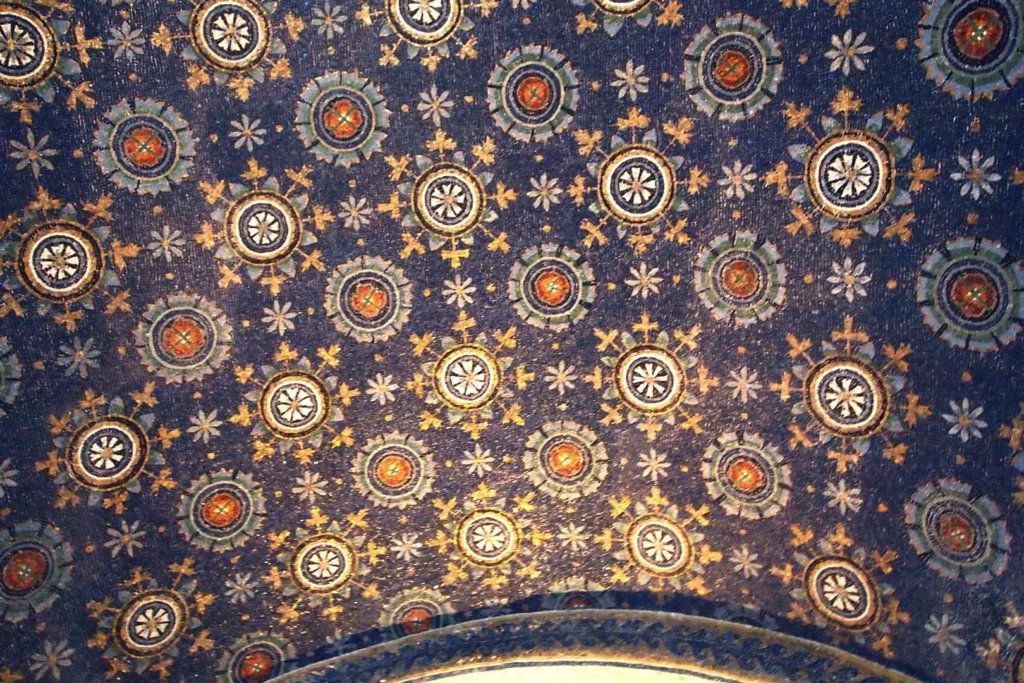

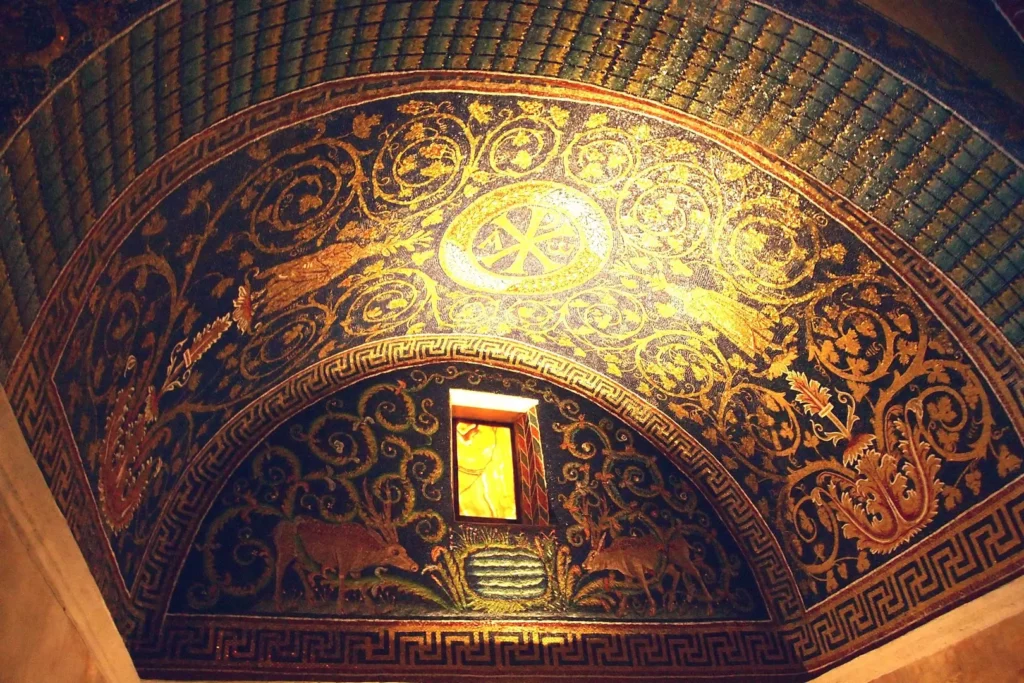
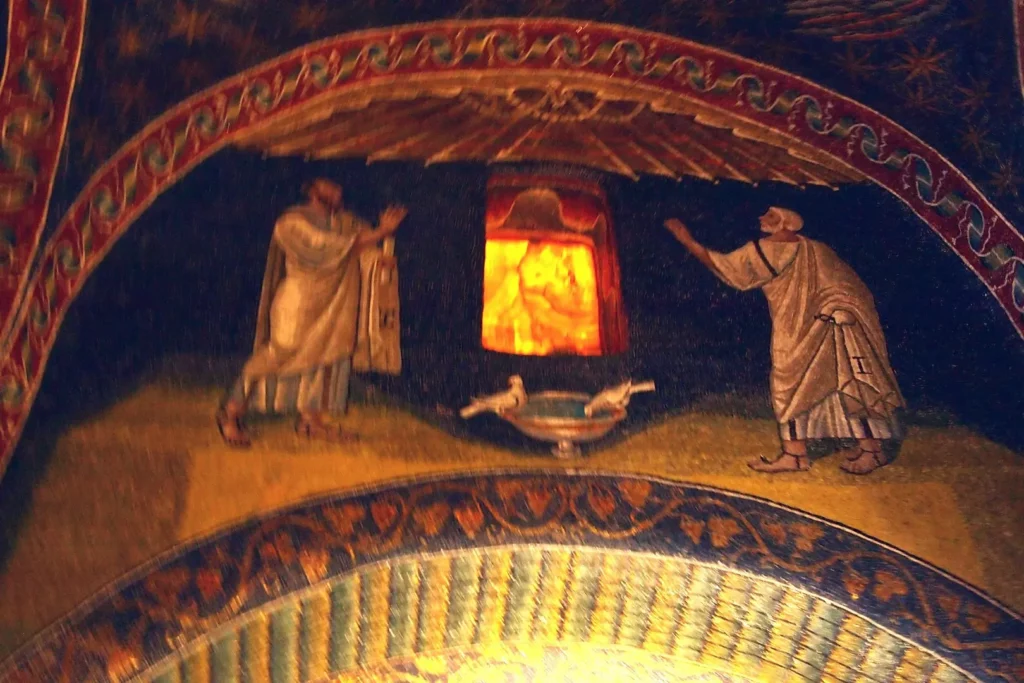
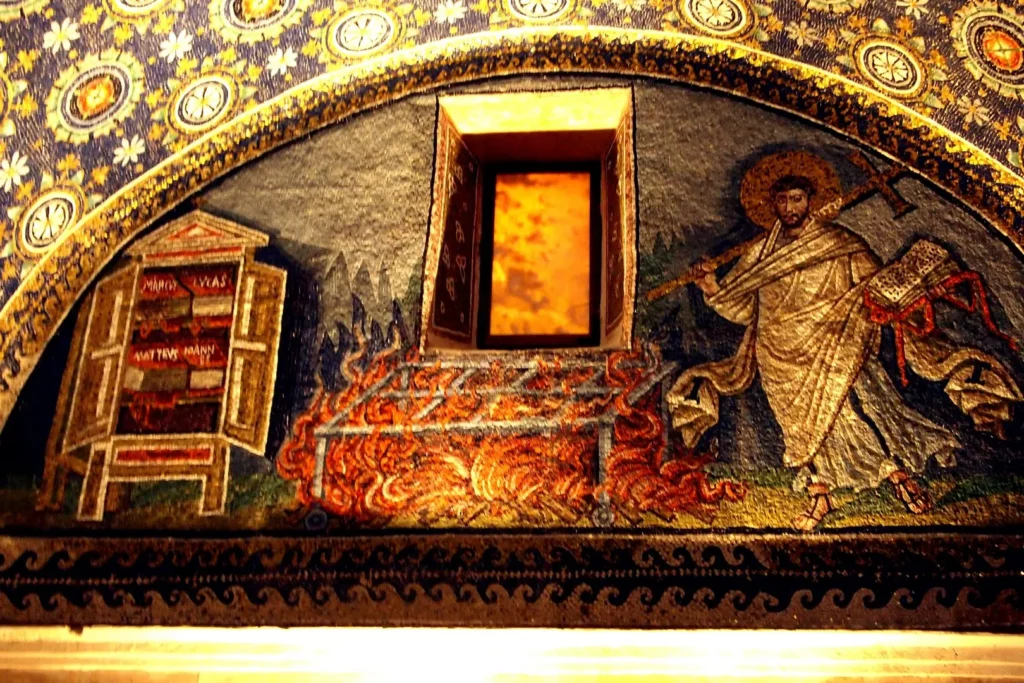
Light penetrates through such loopholes.

For an even bigger mosaic hit, don’t forget to visit the House of Stone Carpets (7, Domus dei Tappeti di pietra), an excavation of a 5th-6th century Byzantine villa whose floors were entirely covered in mosaics. The exposition is located under the yellow building of the Church of St. Eufemia on the same street as San Vitale, 3 meters below ground level. Entrance to the left of the altar.
Battistero Neoniano (8)
And another church with mosaics is the baptistery of Neon (baptistery of the Orthodox) at the Duomo.
The baptistery was built in the 4th-5th century, and decorated under Bishop Neon in the middle of the 5th century, hence its name.
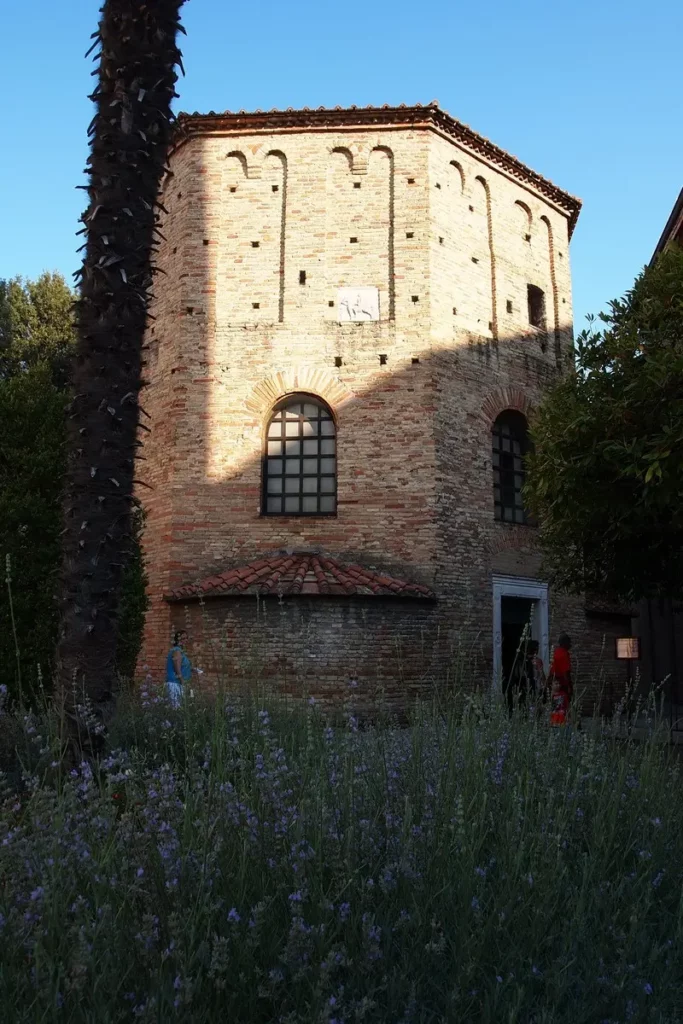

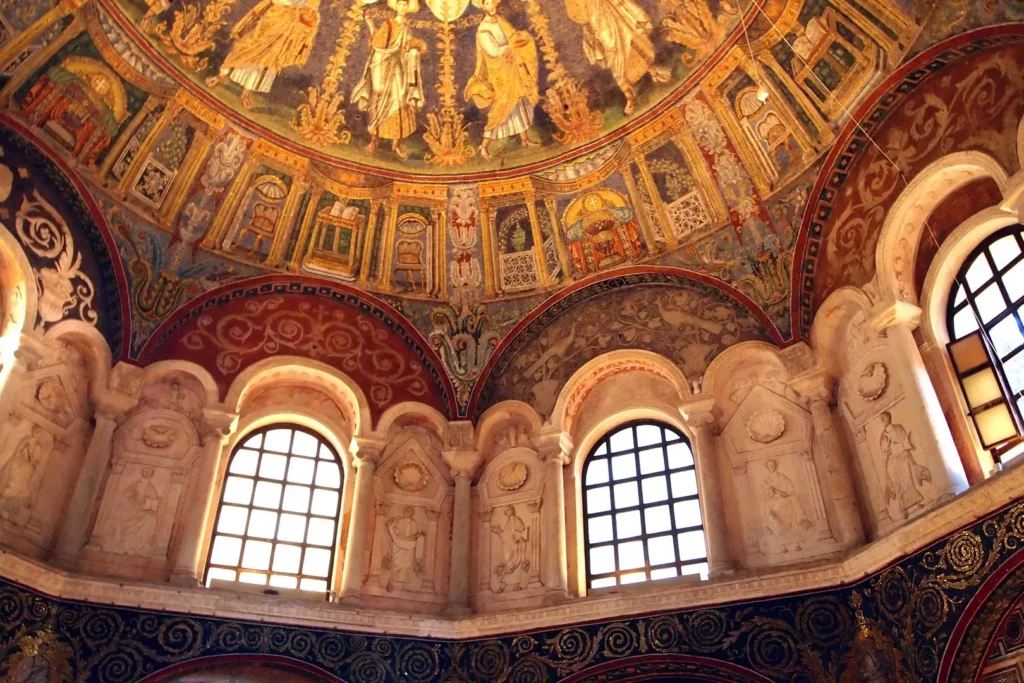

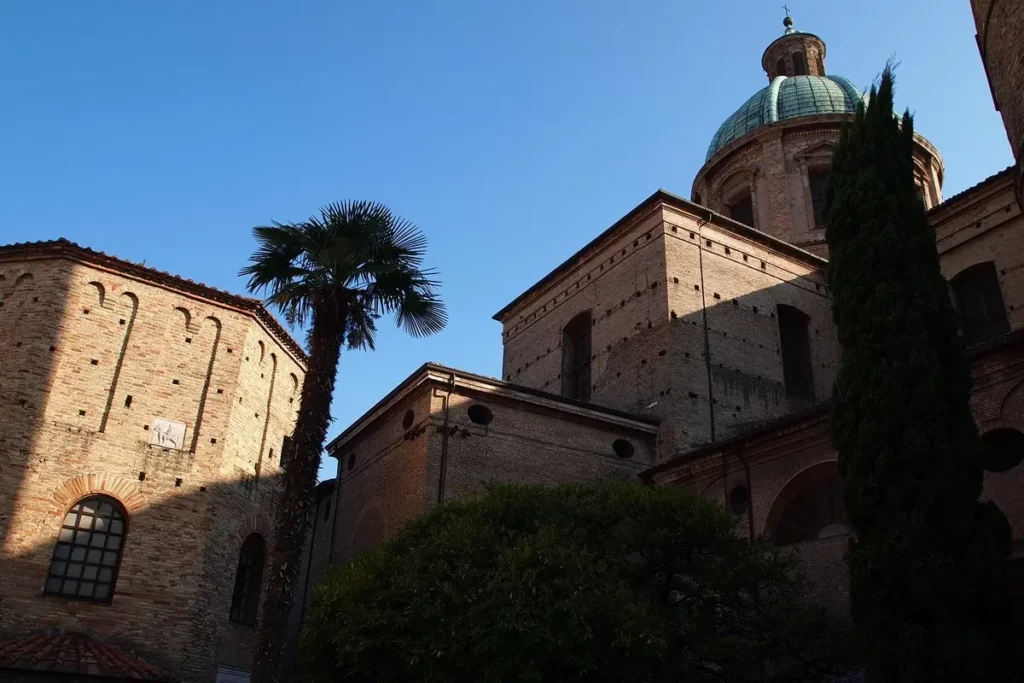
Ravenna old town
And now let’s walk a little in the Ravenna old town.
Central square Piazza del Popolo (9).
To the right and behind is the town hall. Ahead is the clock tower (18th century, rebuilding of two adjacent churches). On the columns are the patrons of Ravenna, St. Apollinare, the first local bishop, and the martyr San Vitale, who was placed in the place of the Venetian winged lion after 1509, when the power of Venice in Ravenna ended.

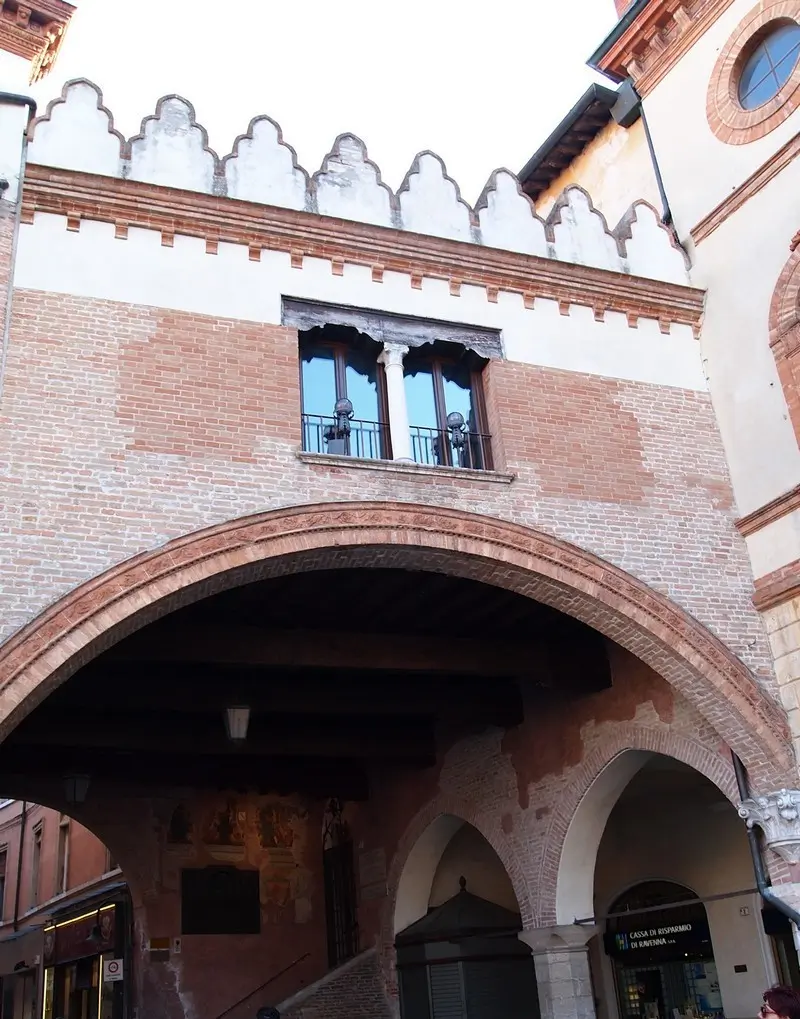
This part of the town hall is called the Palazzetto Veneziano. It was built for the Venetian ruler immediately after the conquest of the city (15th century).

This part of the town hall is called the Palazzo del Comune (Palazzo Merlato) and was built in the 17th and 18th centuries.

Church of San Francesco (10), next to which is the mausoleum and museum of Dante.
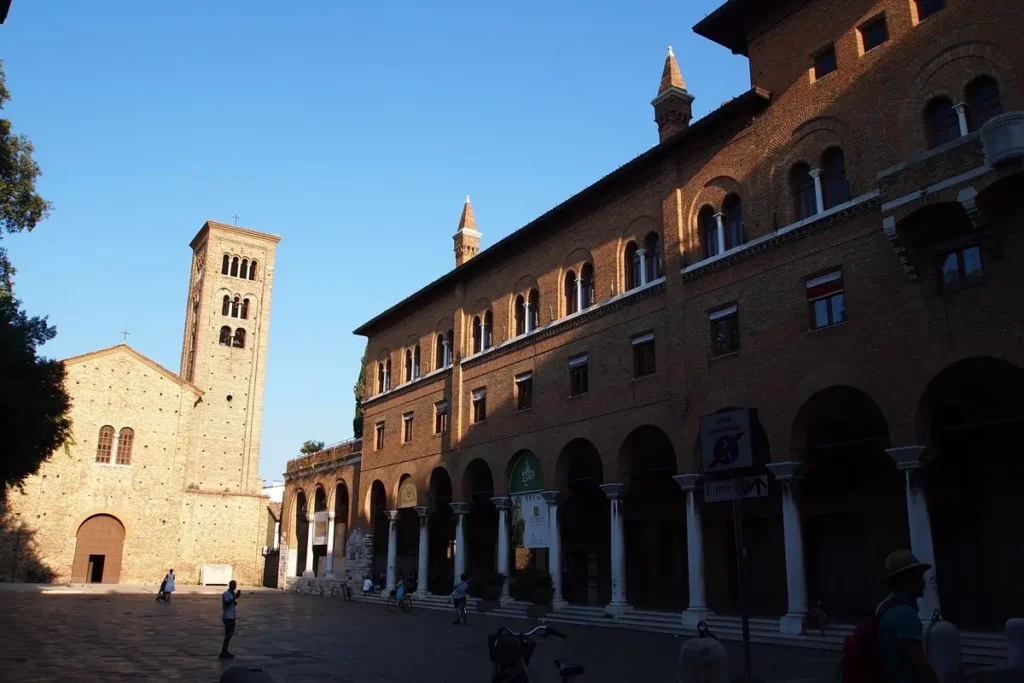
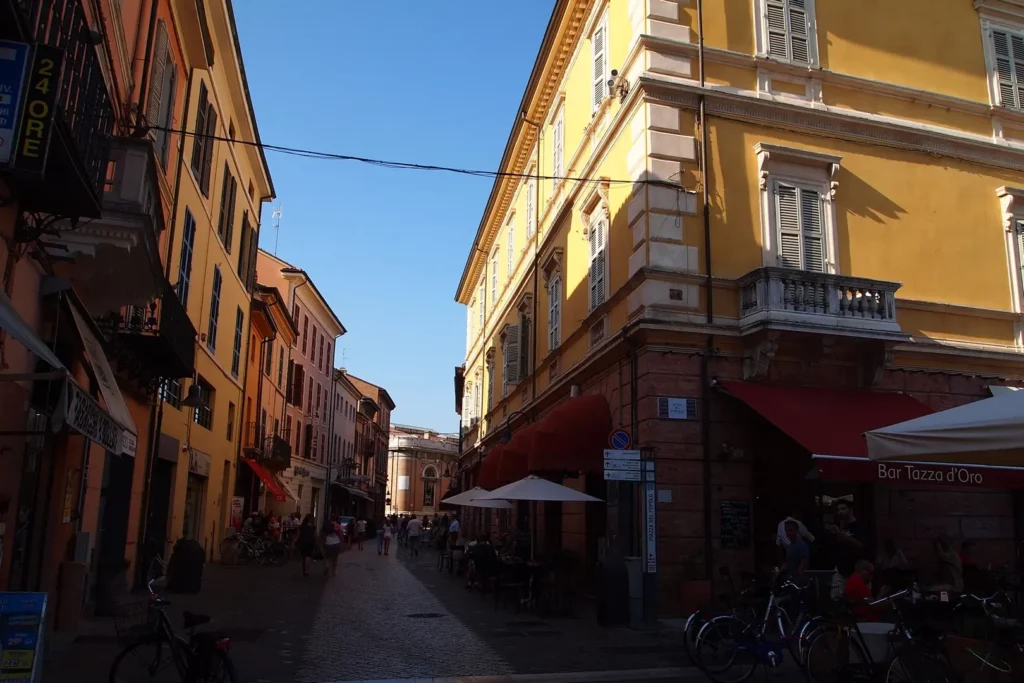
And another old basilica of Sant’Agata Maggiore – 5th c. (11, rarely open).
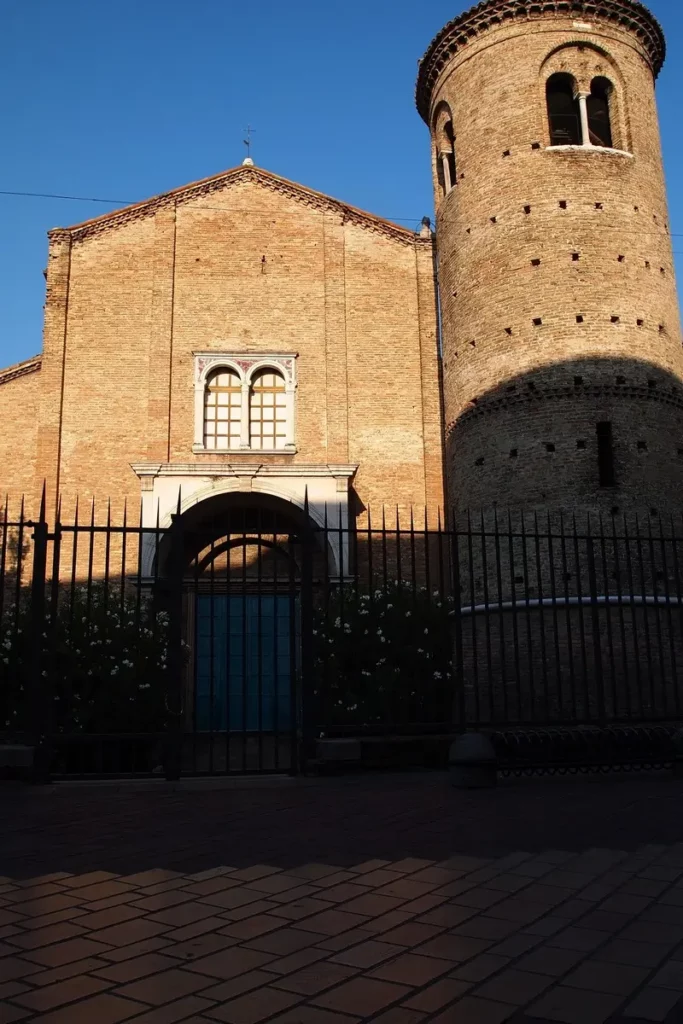
What else to visit in Ravenna
In addition to the must-see San Vitale and Galla Placidia mausoleum, Ravenna offers a number of other museums.
Near the route:
The Archbishop’s Museum (8, Museo arcivescovile), where they collected interesting things from those churches and buildings that no longer exist.
TAMO – mosaic museum (12).
RAM, Museo d’Arte (1)
Rocca Brancaleone – late medieval fortress, now a city garden.
Porta Serrata (1235), Porta Adriana (rebuilt in the 16th century) – city gates. The map also shows the preserved city walls.
Not in the center:
Theodoric Mausoleum (13, 5th century). Theodoric’s ashes were excavated as early as the 6th century, and the mausoleum was converted into an oratory.
Classis Ravenna – a large archaeological museum and archaeological park on the site of the former port of Classis. There is also another basilica with magnificent mosaics – Sant’Apollinare in Classe
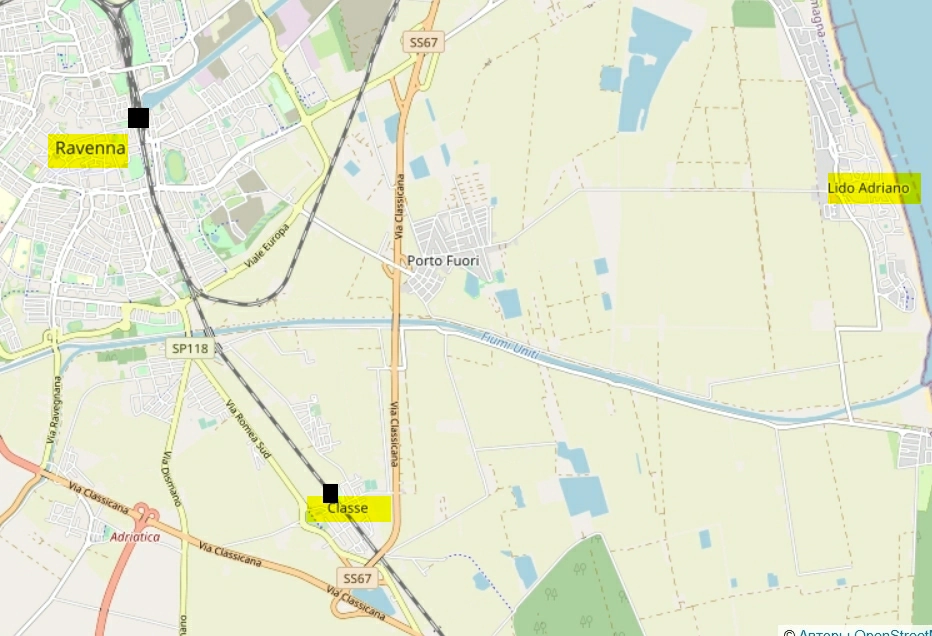
Lido Adriano. Ravenna beach resorts
Torre Pedrera Rimini
Around Ravenna. What to visit
Around Rimini map. Tourist destinations
Brisighella
Dozza street art and old town
What to see in Padua
Around Venice and Lido di Jesolo. Map of attractions
Do you enjoy the site without cookies? This means that I work for you at my own expense.
Perhaps you would like to support my work here.
Or change your cookie settings here. I don’t use personalized ads

